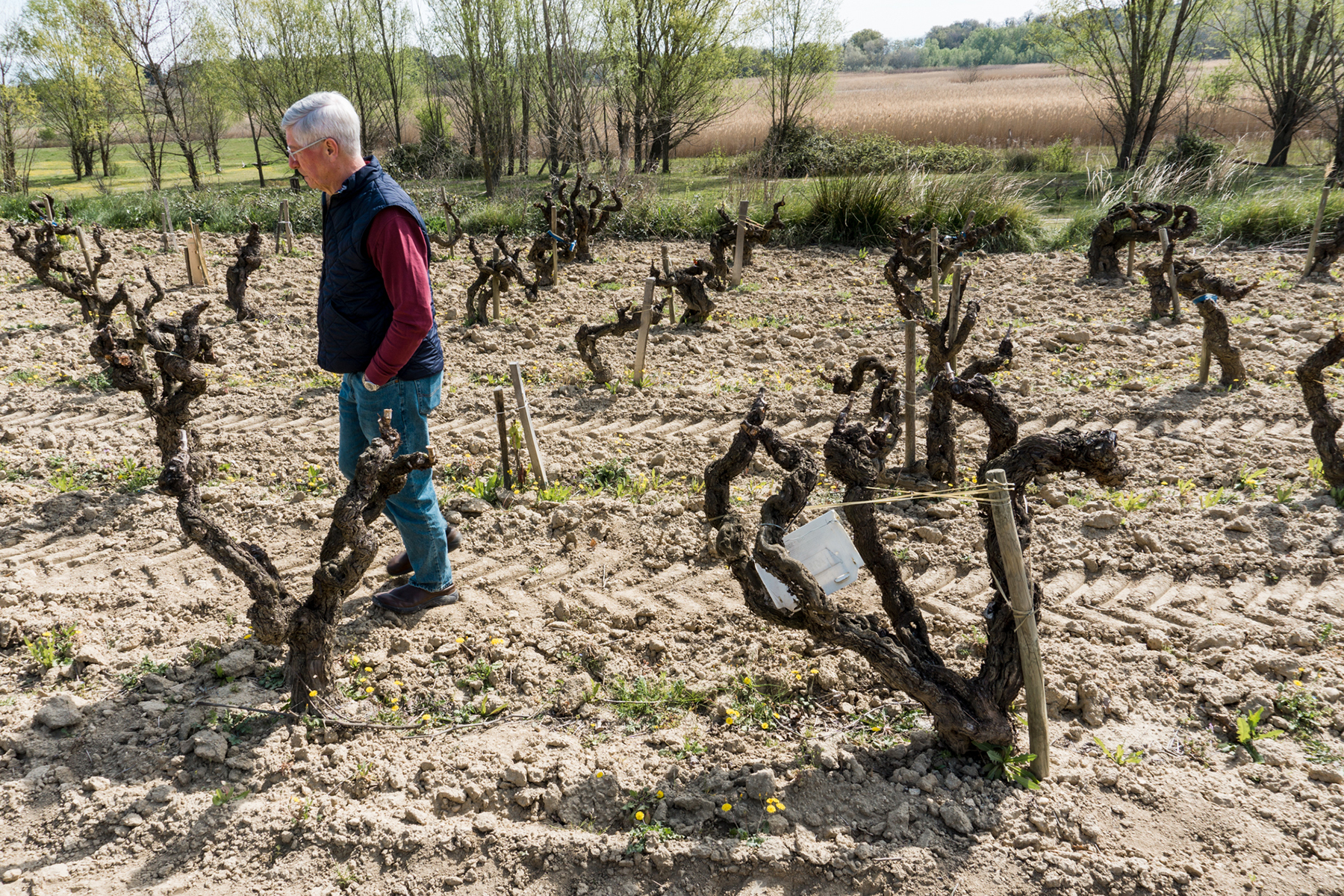
Ansonia Journal: Vine Age
March 17, 2021
Vines are a crucial conduit in the transformation from terroir into taste, and their age and health are an important variable in winemaking. Grape vines are plants like any other: they’re planted, they grow, they bear fruit each season, and they die. And just like other plants (and people, for that matter) their character changes as they age.
What is an “old” vine?
The phrase “old vines” (“vieilles vignes” in French) is just about the only element of a French wine label that isn’t precisely regulated. The phrase has no technical requirements — anyone can categorize any of their vines as old.
Vines begin producing fruit around 3 years after planting. Most consider the fruit to be “mature” starting with 8-12 year-old vines, and many winemakers separate fruit from younger vines to be bottled separately or sold off in bulk.
Vines begin to decline in yield around 30 years after planting, though there’s variation among varietals. Winemakers typically pull up and replace old vines before they’ve died, but after their decline in yield has made them uneconomical. Because the quality of grapes increases as yield decreases, the decision of when to pull up vines is a tricky one.
In the Loire Valley, the average age of vines is over 30. In Burgundy, where low yields and small plots are the norm, the average age is 50. In the south of France, home to a warm, dry climate and heartier varietals (carignan, grenache, mourvèdre), some winemakers let their vines reach over 100 years before replanting.
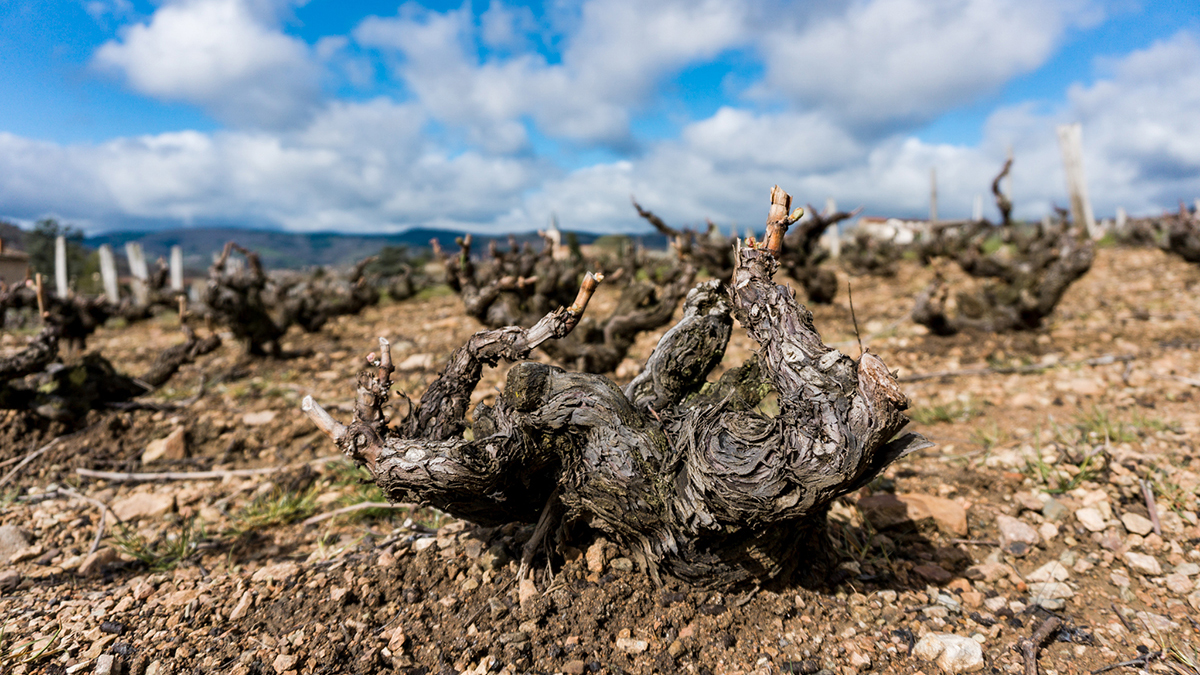
How do vines change with age?
As a vine ages its root system expands into the earth. Deeper and wider ranging roots give the vines more access to soil nutrients and water. This makes them less susceptible to droughts, and gives them a wider swath of terroir from which to draw their expression.
One Burgundy vigneron told us recently they’ve been replanting their vines planted in the 1980s and 1990s, but leaving those planted before 1980 in place. The younger vines have not performed well during recent warm vintages — their roots had not yet reached far enough into the earth, and the clones used were not well adapted to climate change. The older vines, with extensive root networks, have fared better amid the warming summers.
As vines age, the visible portion adds bark and grows thicker, much like a tree. Like people, they become more fragile with time, and are more susceptible to injury. Some winemakers will prop up their old vines with stakes, tying branches together to help relieve stress from wind and gravity.
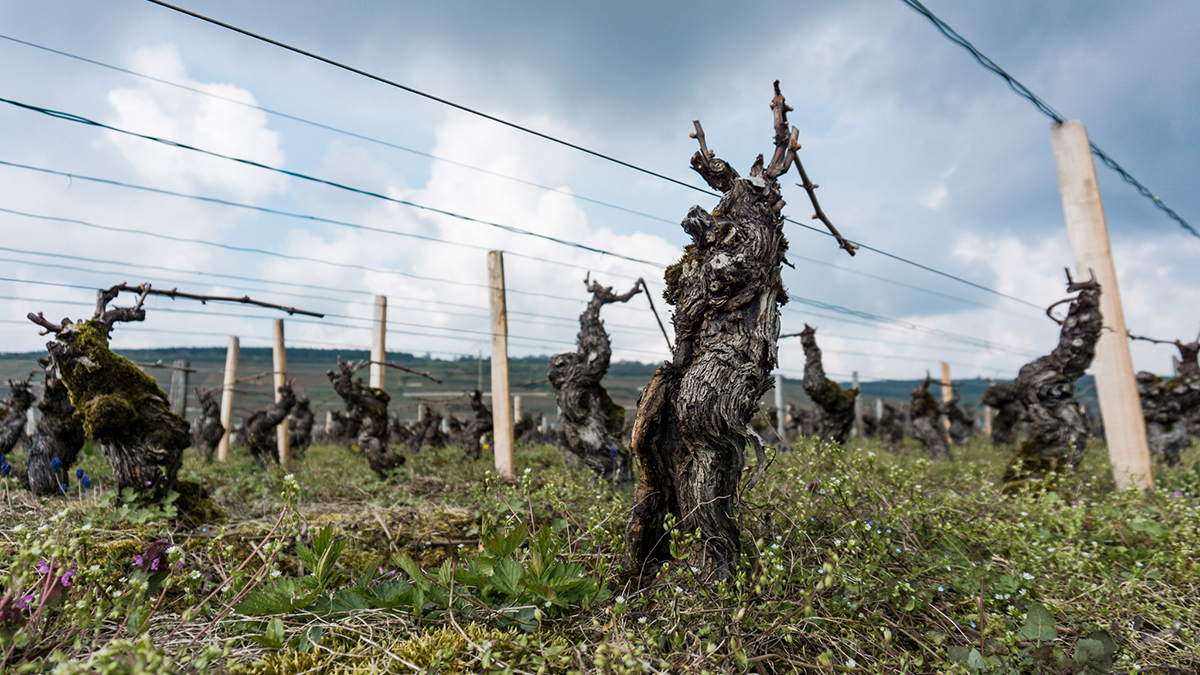
What does vine age mean for the fruit?
Older vines produce smaller berries, smaller clusters, and fewer berries per cluster. These berries usually contain a higher skin-to-juice ratio, and so create more concentrated wine.
As a vine ages and its yields diminish, the character of the fruit changes and the quality increases. Old vines benefit from an ever expanding root system, which pulls a larger and wider array of nutrients into the plant. These nutrients are spread over a smaller number of bunches, generally resulting in higher quality grapes. Old vines also produce fewer leaves each year, which results in more sun for the fruit.

When and how do winemakers replant?
There are two methods for replanting vines: pulling up an entire parcel all at once, or replacing some percentage of vines each year. Replanting an entire plot at once is simpler, as it allows the winemaker to fix soil compaction issues, and makes it easier for the roots of the new vines to take hold. But it can be costly — after pulling up the vines, most winemakers leave the vineyards fallow for several years, often growing grasses or grains to replenish the biological health of the soil. Then after replanting, the winemaker must wait until the vine reaches maturity before using the fruit. Careful winemakers may lose up to a decade of production.
Others replant poorly performing or diseased vines every year. The average age of the vineyard decreases, but production remains healthy. Winemakers will often use a combination of these two methods, replacing a few vines here and there to help an older vineyard hang on, then replanting the rest of the old vines en masse when production becomes uneconomical.
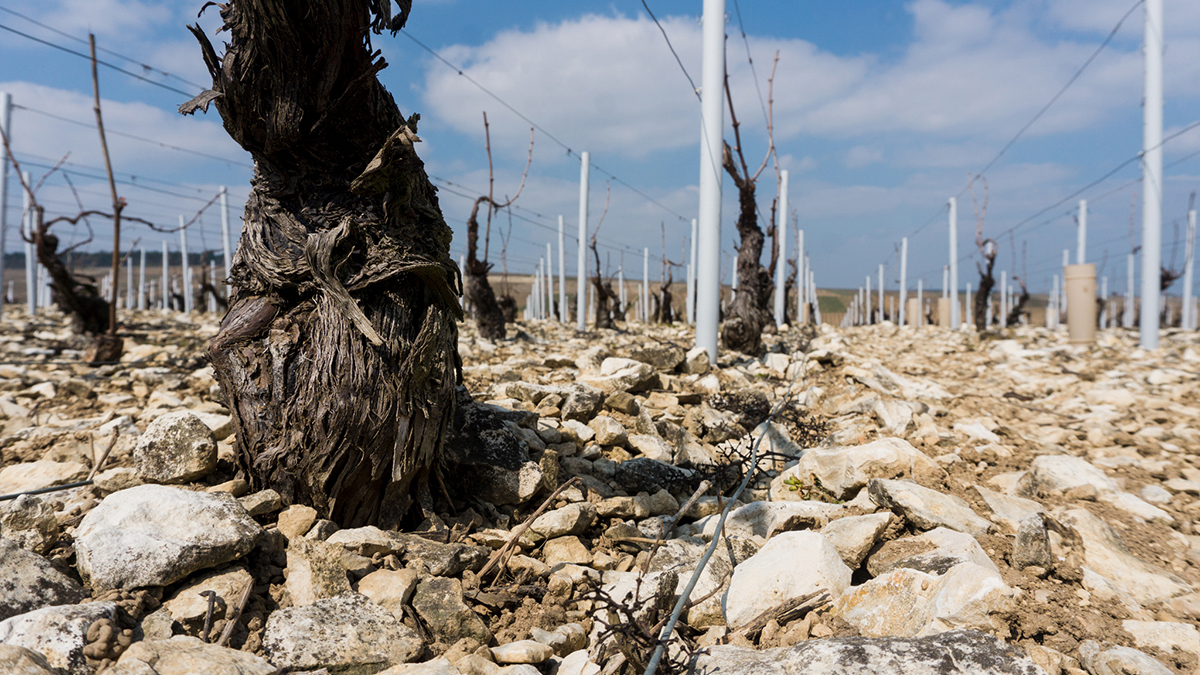
What do old-vine wines taste like?
Because of the increased skin-to-juice ratio, red wine made from older vines often has more density and concentration. The potential for tannin is greater, so winemakers take care not to overextract the juice from old vines. In finished wines of both colors, most of the benefit from old vines appears on the mid-palate — a thicker texture and increased intensity.
The winemakers we work with treat their old vines like beloved family members. And indeed a plot of well-cared-for old vines is a nearly priceless inheritance, a testament to ancestral forethought. Vincent Boyer farms a plot of vines in Meursault (see photo below) planted in 1924 by his great-grandmother Lucie, who ran the domaine by herself during World War II. After nearly a century in production, they still produce outstanding material from their clay-rich soils.
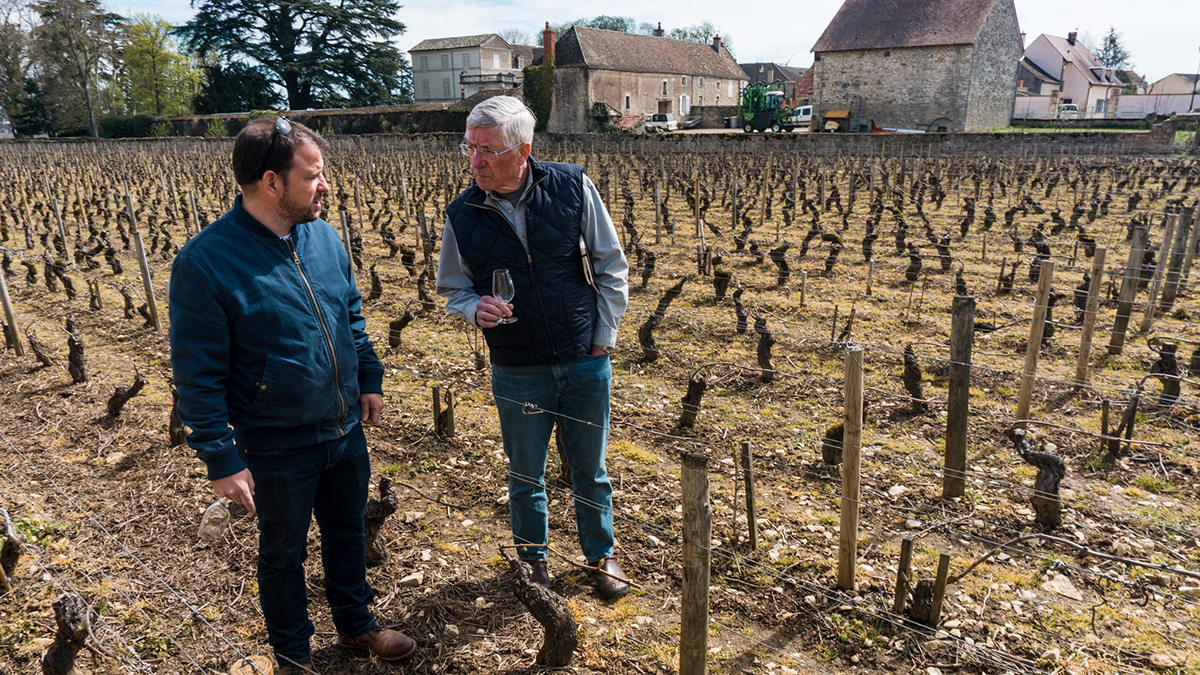
Vincent Ravaut of Ladoix recently described pulling up a section of vines in his red Corton Grand Cru, and replanting it with Chardonnay, which he felt was more suited to the terroir. He told us it would be years before they’d begin producing grapes, and even longer before the grapes were Grand Cru quality. “I may not recognize the benefit of these, but my son will enjoy them,” he told us, referring to his 13-year-old.
Jacqueline André farms a remarkable plot of 140-year-old Grenache in Châteauneuf-du-Pape, which she refers to as her grandes dames (“old ladies”). She credits her father’s very early adoption of biodynamic viticulture with their health and survival — the vines have been chemical free for more than half a century. “Vines are like people,” she told us, “if we eat junk food all day and don’t exercise, our bodies deteriorate. It’s the same with vines — if we respect them and help them remain healthy, they continue to give back to us.”
Winemakers from the Ansonia Portfolio with particularly old vines (or old-vine cuvées) include: Boursot, Varoilles, Boyer-Martenot, Gautheron, Tunnel, Dumien-Serrette, Joncuas, André, and Sanzay.
TW
_______________________________
Download this article as a PDF
